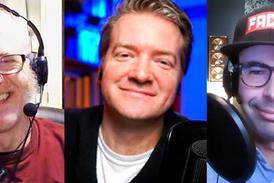Apologist Joel Furches explores this ancient Chinese religion
Taoism is an ancient Chinese religion – or category of religious practices – which extends back into legend beyond the written history of China. The Tao Te Ching (c. 300 BCE) is widely regarded as one of the definitive texts in Taoist teaching.
While its origins are ancient and uncertain, Taoist legend claims that it was dictated in one sitting by an ancient Taoist master. The legend says that this master was fleeing into the mountain pass to escape political turmoil, and the keeper of the pass recognised that he was about to die. In order to preserve his wisdom, the keeper asked the master to dictate the secrets of Tao. The result was a short book of Chinese wisdom in two parts.
The Tao Te Ching opens with a statement which is emblematic of most Eastern wisdom texts: “That which is called Tao is not Tao. Names can name no lasting name.” As frustrating as it may seem, this is possibly the best way to describe Taoism. Unlike Western religions which are so regimented, dogmatic, and claim to have access to universal truths, Taoism has no orthodoxy, no set beliefs and no standards of practice.
In many ways, it is an umbrella term for any number of ancient Chinese practices and beliefs, and has gradually absorbed competing teachings under its umbrella. As, for instance, with Confucious’ teachings, which were not originally Taoist in nature, but eventually became part of Taoist tradition. Taoism is self-aware of its plastic, ever-changing nature, and says that, in Taoism, there is no orthodoxy, only schools.
Communist China did its best to stamp out Taoism, but by then its practice had spread throughout Asia. Eventually, Communist China reluctantly allowed the practice of Taoism to recommence with strict regulation.
Read more:
Who are the Jehovah’s Witnesses and how do they differ from Christianity?
What is Judaism and how does it differ from Christianity?
What is Hinduism and how does it differ from Christianity?
The goal of Taoism
Like all religious systems, Taoism is primarily concerned with addressing the problem of death. Most pagan religions have focused on a spiritual afterlife. Christianity and some sects of Judaism focus on resurrection of the dead at a future time. Hinduism focuses on reincarnation. Buddhism focuses on the annihilation of the soul to escape reincarnation.
Taoism has a different approach to all of the above. While most schools of Taoism teach some form of afterlife and reincarnation of some sort, this is not Taoism’s ultimate solution to death. Taoism is concerned with physical longevity and, eventually, achieving physical immortality.
While Christianity gives a definitive answer as to how one is to achieve one’s future resurrection (faith in the saving work of Jesus), and most religions lay out behavioural rules to achieve their version of immortality (the five pillars of Islam, the eightfold path of Buddha, the 613 laws of Judaism, etc), Taoism is in a state of ongoing questing for the secret of physical immortality.
While it has countless practices to sustain physical health and to extend physical life, actual solutions to the problem of death only exist in Taoist legend, and the search seems to be ongoing. This search for the solution to death has resided in the realm of Taoist alchemy.
Chinese alchemy
Alchemy is largely considered to have been a practice of Mediaeval Europeans, but the history of Chinese alchemy is extensive. Because it promised immortality, it received ample funding over the centuries from whichever dynastic family happened to be in rule at the time.
The alchemy of ancient China was not dissimilar to that of ancient Europe. While modern sentiment tends to classify things into the realm of either the non-physical (ideas like love, truth, logic and spirituality) or the physical (anything that can be seen, touched, or studied by science), ancient alchemists made no such distinction, frequently blending magic words and symbols along with astrology into their mixing of chemical substances.
In Europe, alchemy searched for the “philosopher’s stone”, a substance which would bring both physical and spiritual purity to all that it touched. In China, the search was the “golden pill”, a physical item which could be ingested to bring about immortality. Sadly, most efforts at creating the fabled golden pill involved the use of lead, mercury and other toxic substances, which had quite the opposite effect from that intended.
Eventually, Taoist practitioners made the change from the alchemy described above (external alchemy) to a more ritualistic practice dubbed “internal alchemy”. Internal alchemical practices describe gods, demons and spirits which reside in the various areas of the body. Conflict between these entities, or the exiting of these entities from the body are the cause of disease, ageing and death.
In order to achieve its goal of eternal life, a practitioner of internal alchemy must engage in a variety of practices to keep these forces in harmony with one another, and to prevent them from exiting the body over time. These practices range from dietary restrictions and breathing exercises to sexual practices and martial arts. Because these practices demand such extraordinary restraint, dedication, discipline and self-control, a life of monastic dedication or hermitage is frequently required.
Read more:
Protestant, Catholic and Orthodox: What’s the difference and does it matter?
What is Islam and how does it differ from Christianity?
What is Mormonism and how does it differ from Christianity?
Religious elements
Taoism is not immune to traditional religious trappings. Practitioners erect shrines to ancestors and various deities, at which one may worship or leave offerings of food, written prayers, or items of value such as clothes and jewellery. These shrines are tended by a priestly cast.
At its religious level, Taoism is a religion of gaining and maintaining power. Power may be gained by the practices outlined above, but can also be gained by invoking deities and spirits, and, in some cases, inviting these supernatural forces to enter one’s body and instil one with power, not unlike the rituals of Voodoo.
Once power is gained, these powers may be used to combat malevolent spirits, bring good weather, transform into animals, gain spiritual insights – including predicting the future – or help wandering ghosts to find their way to the afterlife.
I previously said that Taoist’s solution to death was the quest for physical immortality. So what of these “afterlife” beliefs? Like every religion, Taoism has its own spiritual cosmology. After a person dies, that person enters an “in-between” state as he or she transitions to the celestial realm. This in-between state may be inhabited by other spirits who never made it to the celestial realm and became ghosts, ghouls and zombies as they wandered about.
A Taoist shaman can enter the in-between realm and guide these poor souls onward before they, too, become ghosts, ghouls and zombies. Upon entering the celestial realm, souls – no matter how wicked in life – are prepared for reincarnation. This preparation may include reform and re-education in one of the many “hells” suggested within this cosmology.
It is worth reiterating that the religious elements outlined above are not shared by all practising members of the religion, and should not be understood in the rigid, dogmatic way in which Western religions tend to operate.
Get access to exclusive bonus content & updates: register & sign up to the Premier Unbelievable? newsletter!
Differences from Christianity
After reading the above, anyone with even a passing understanding of Christianity should see that Taoism and Christianity have practically nothing in common. Christianity asserts that there exists a common moral code established by divine law which, when violated leads to a separation between the person and his or her creator.
The goal of Christianity is reconciliation between the person and his or her creator. This reconciliation, once achieved, will result in eternal life in a resurrected, perfected body in a future, perfected Earth.
Taoism is not without its ethical laws and codes. In fact, volumes upon volumes have been written over the millennia regarding right and wrong within a Taoist system. These laws regard societal harmony, political practice and personal virtue. But unlike so many other religious systems, none of these writings are held as decisive, and morality is a matter of ongoing debate within the system.
Some forms of Taoism would accept an almost fatalistic view that right and wrong are simply part of the eternal cycle of light/ day, life/ death, and that each person plays a part in this cycle. But most forms of Taoism would encourage practitioners to be good people, and “goodness” is achieved by the pursuit of internal harmony by way of the practices described within the system.
In this respect, Taoism places the responsibility for obtaining virtue on the individual. Over time, Taoism has picked up a karmic philosophy similar to Buddhism, suggesting that the penalty for bad choices are punishments meted out upon the individual by the Universe. Good actions would result in extended life, a less difficult afterlife and eventual reincarnation.
Taoism claims to have “a hundred schools” of thought, which is simply to say an uncountable number. Similarly, Christianity is fractured into a variety of schools, ranging from the highly ceremonial and tradition-bound Eastern Orthodox to the seemingly chaotic and overwhelming Pentecostals. However, while these denominations of Christianity would all argue with some degree of certainty that they have the “right” concepts and practices and the others are “wrong”, Taoists seem to accept their differences without the Western concern for ontological certainty.
Nevertheless, Christian denominations do seem to share a few, fundamental beliefs in common for all their differences. These beliefs being that Jesus died and then was resurrected by God for the forgiveness of sins and the reconciliation of God and humans. It is difficult to identify any “core” beliefs held in common by Taoists. Taoism appears to be merely a religious laboratory in which practitioners experiment in the effort to discover something meaningful for them.
Joel Furches is an apologist, journalist and researcher on conversion and deconversion, based in the USA.























